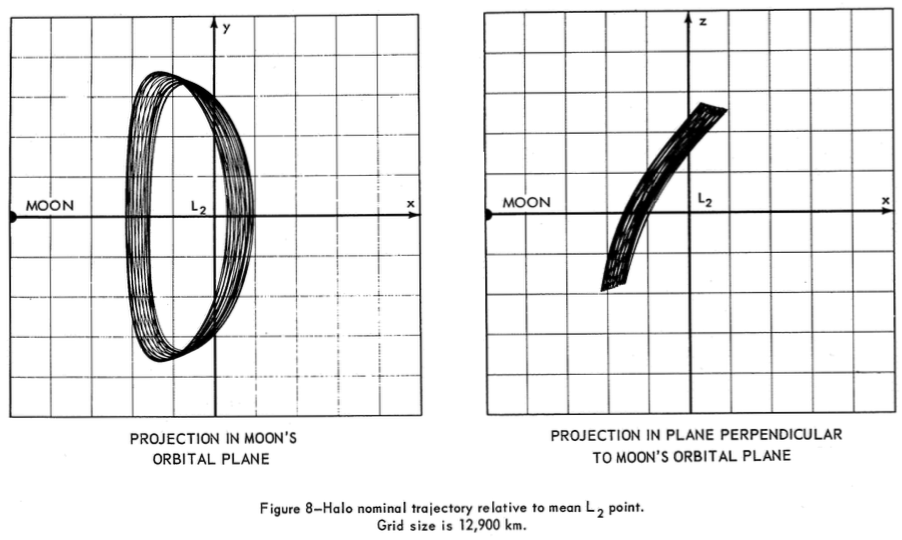This is a supplementary answer because it still involves geometry, even though it's really future geometry.
tl;dr: Large halo orbits are definitely preferred to small halo orbits because the small ones are not halo orbits! They will be criss-crossy Lissajous orbits and sooner or later end up along the axis between the two bodies (geometry reasons) even though they originally clear that area.
The article Chang'e-4 lunar far side satellite named 'magpie bridge' from folklore tale of lovers crossing the Milky Way about Queqiao, which will be (among other things) Chang'e-4's relay satellite, was found in this interesting answer. They both point out that Queqiao will be in a halo orbit around the Earth-Moon L2 point so that it has a line of sight to both the far side of the Moon as well as the Earth at all times.
This led me to re-review Robert W. Farquhar's hundred page tome The Utilization of Halo Orbits in Advanced Lunar Operations, NASA Tech. Note D-6365.
In section II.B.2.b, he points out:
For every value of $A_y$ > 32,871 km, there is a corresponding value of $A_z$ that will produce a nominal path where the fundamental periods of the y-axis and z-axis oscillations are equal. In this case, the nominal path as seen from the earth will never pass behind the moon. The exact relationship between $A_y$, and $A_z$, for this family of nominal paths is given in Figure 5.
To first order, the motion of an object near the L2 equilibrium point is periodic in the x, y plane of the Moon's orbit, and it is also periodic out of plane in the z direction. However, the xy period and the z period are not necessarily equal! The name for the pattern made by harmonic motion in two axes where the periods are not constrained to be identical is called a Lissajous pattern, and likewise these orbits are called Lissajous orbits. The problem is that unlike equal periods resulting in a "nice, halo orbit" these will sooner or later move so close to the Earth-Moon axis that communications with the Earth will be blocked.
This is a well known problem. For example, sooner or later DSCOVR will end up passing so close to the Earth's line of sight with the Sun that communications will be lost for weeks or longer.
Therefore, the reason that large halo orbits are definitely preferred to small halo orbits is that small halo orbits are not halo orbits! While they might be lumped into the "halo category" if they are not large enough they will not be able to have equal in-plane and out-of-plane periods, and really be just Lissajous orbits with unequal periods. While if they are large enough, they can be constructed as Lissajous orbits with equal periods and therefore be proper halo orbits. Though this is not automatic careful adjusting of the ratio of in-plane to out-of-plane amplitudes (the "For every value of $A_y$ > 32,871 km, there is a corresponding value of $A_z$..." block quote from Farquhar.





